Abstract
The germination process of mustard seeds (Sinapis alba L.) has been characterized by the time courses of water uptake, rupturing of the seed coat (12 hours after sowing), onset of axis growth (18 hours after sowing), and the point of no return, where the seeds lose the ability to survive redesiccation (12 to 24 hours after sowing, depending on embryo part). Abscisic acid (ABA) reversibly arrests embryo development at the brink of radicle growth initiation, inhibiting the water uptake which accompanies embryo growth. Seeds which have been kept dormant by ABA for several days will, after removal of the hormone, rapidly take up water and continue the germination process. Seeds which have been preincubated in water lose the sensitivity to be arrested by ABA after about 12 hours after sowing. This escape from ABA-mediated dormancy is not due to an inactivation of the hormone but to a loss of competence to respond to ABA during the course of germination. The sensitivity to ABA can be restored in these seeds by redrying. It is concluded that a primary action of ABA in inhibiting seed germination is the control of water uptake of the embryo tissues rather than the control of DNA, RNA, or protein syntheses.
Full text
PDF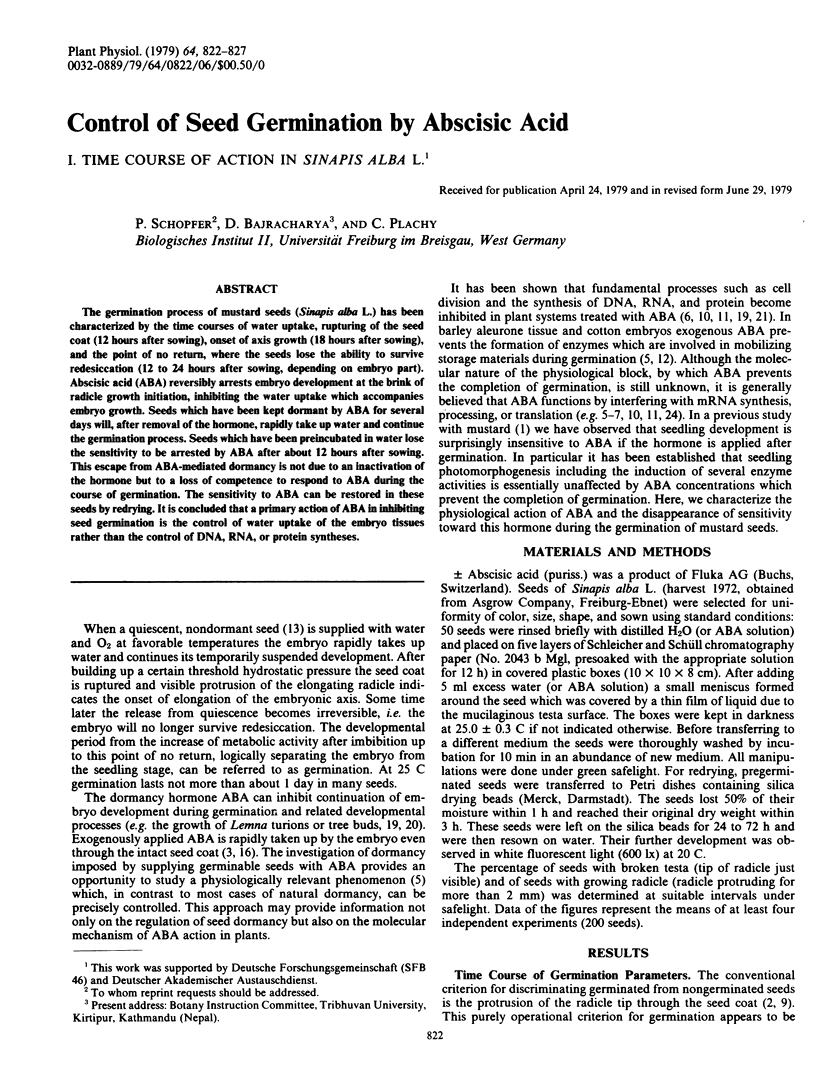
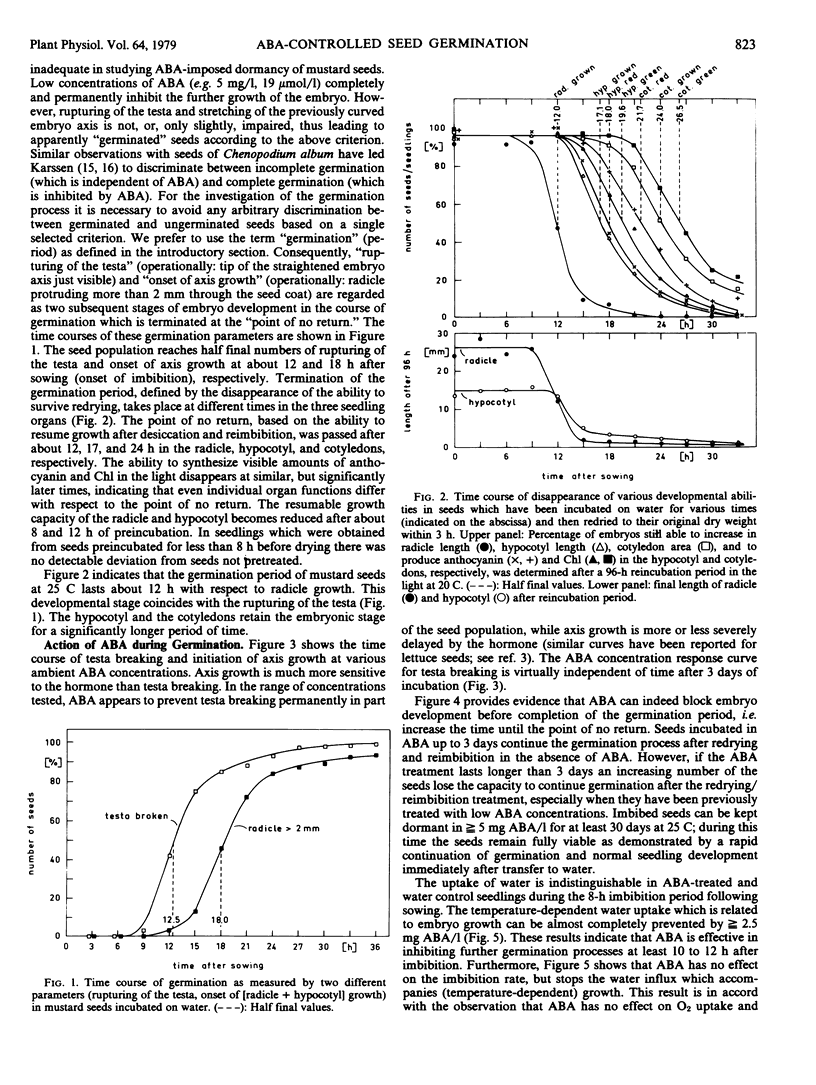
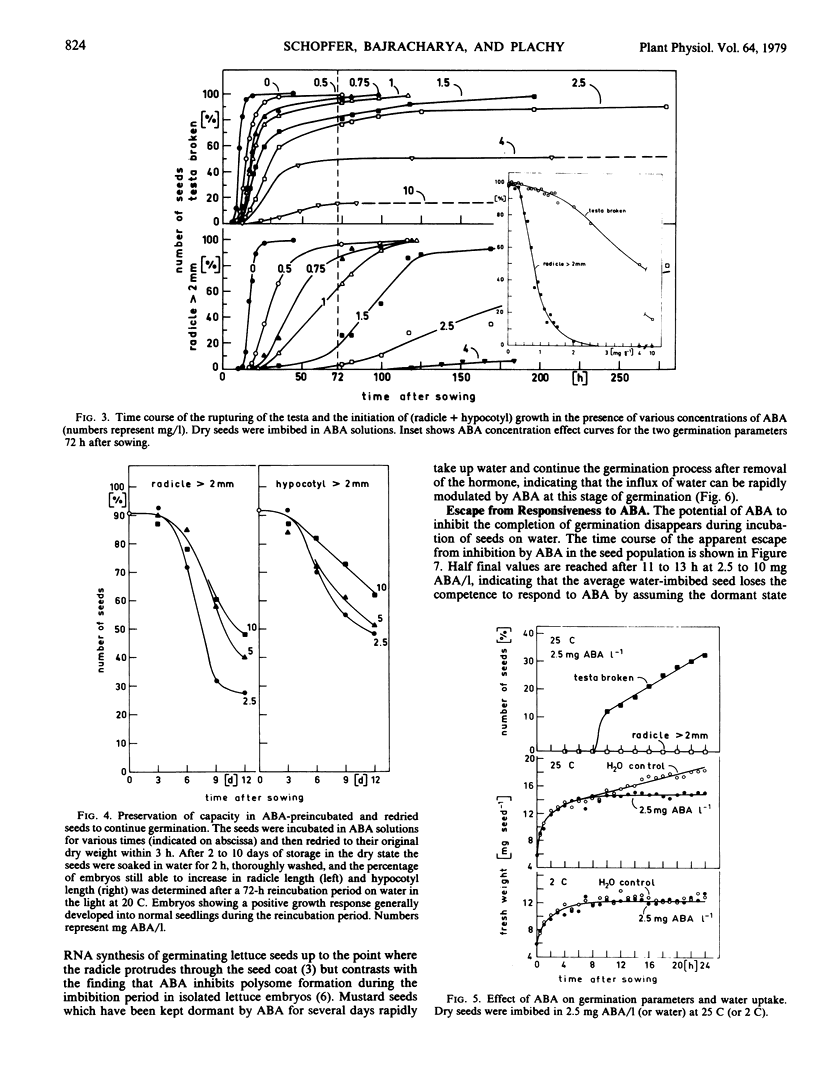
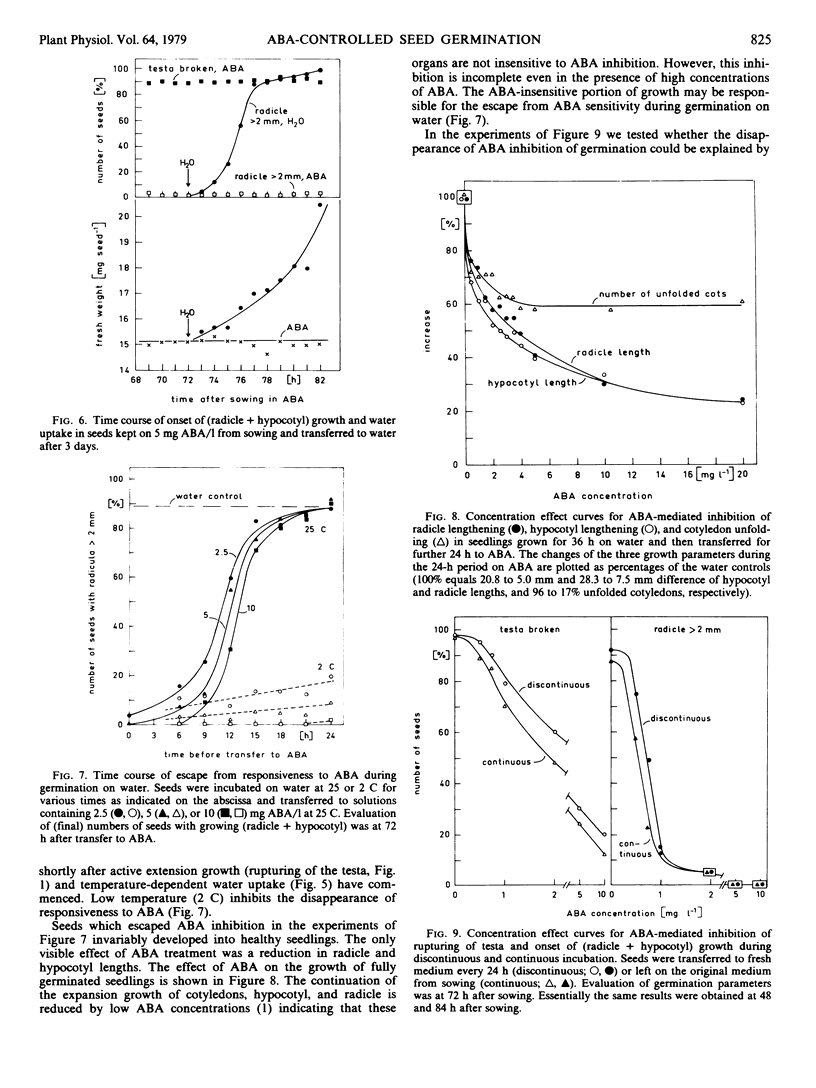
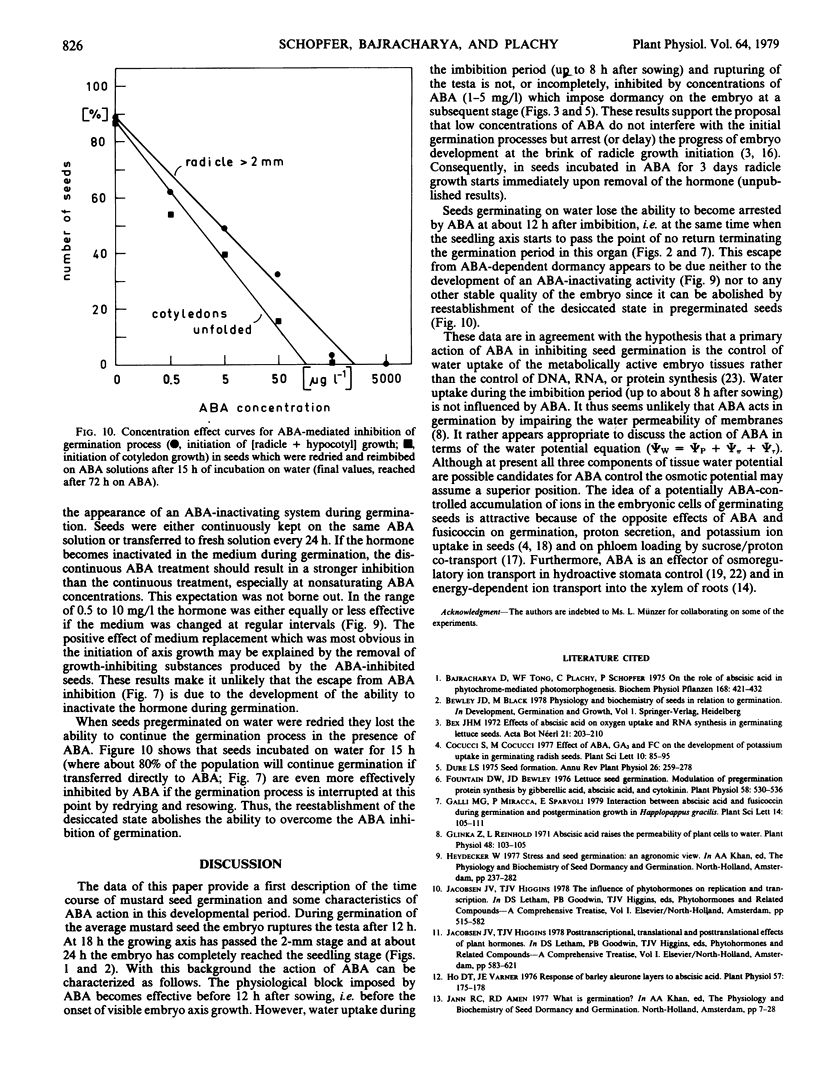

Selected References
These references are in PubMed. This may not be the complete list of references from this article.
- Fountain D. W., Bewley J. D. Lettuce seed germination: modulation of pregermination protein synthesis by gibberellic Acid, abscisic Acid, and cytokinin. Plant Physiol. 1976 Oct;58(4):530–536. doi: 10.1104/pp.58.4.530. [DOI] [PMC free article] [PubMed] [Google Scholar]
- Glinka Z. Abscisic Acid raises the permeability of plant cells to water. Plant Physiol. 1971 Jul;48(1):103–105. doi: 10.1104/pp.48.1.103. [DOI] [PMC free article] [PubMed] [Google Scholar]
- Ho D. T. Response of barley aleurone layers to abscisic Acid. Plant Physiol. 1976 Feb;57(2):175–178. doi: 10.1104/pp.57.2.175. [DOI] [PMC free article] [PubMed] [Google Scholar]


